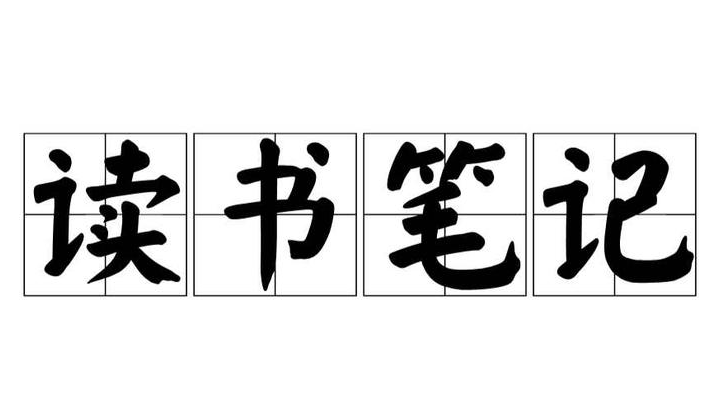Vue中使用ECharts制作的一个统计分析页面
Vue中使用ECharts制作的一个统计分析页面
·
目录
效果图

介绍
ECharts是百度团队制作的,一个使用 JavaScript 实现的开源可视化库,可以流畅的运行在 PC 和移动设备上,兼容当前绝大部分浏览器(IE8/9/10/11,Chrome,Firefox,Safari等),底层依赖矢量图形库 ZRender,提供直观,交互丰富,可高度个性化定制的数据可视化图表。
ECharts官网实例
步骤
第一步,引入依赖
在引入依赖的时候,需要选择旧版本,因为从2022年开始 默认的5.0以上版本会出现渲染问题。
npm install echarts@4.9.0 --save第二步,导入文件
如需全局导入,在main.js中添加如下(建议的是不要全局导入,按需来)
import Vue from 'vue'
import echarts from 'echarts'
//需要挂载到Vue原型上
Vue.prototype.$echarts = echarts
第三步,echart样式配置
分别配置3个ECharts的vue子组件,分别代码如下(可直接复制粘贴使用):
1、折线图
@/ECharts/echarts1.vue/
<template>
<div style="width: auto;height: 470px" id="echarts1">
</div>
</template>
<script>
import echarts from 'echarts'
const colors = ['#5470C6', '#EE6666']
export default {
name: 'echarts1',
data () {
return {
// option配置
option: {
color: colors,
tooltip: {
trigger: 'none',
axisPointer: {
type: 'cross'
}
},
legend: {},
grid: {
top: 70,
bottom: 50
},
xAxis: [
{
type: 'category',
axisTick: {
alignWithLabel: true
},
axisLine: {
onZero: false,
lineStyle: {
color: colors[1]
}
},
axisPointer: {
label: {
formatter: function (params) {
return (
'Precipitation ' +
params.value +
(params.seriesData.length ? ':' + params.seriesData[0].data : '')
)
}
}
},
// prettier-ignore
data: ['2016-1', '2016-2', '2016-3', '2016-4', '2016-5', '2016-6', '2016-7', '2016-8', '2016-9', '2016-10', '2016-11', '2016-12']
},
{
type: 'category',
axisTick: {
alignWithLabel: true
},
axisLine: {
onZero: false,
lineStyle: {
color: colors[0]
}
},
axisPointer: {
label: {
formatter: function (params) {
return (
'Precipitation ' +
params.value +
(params.seriesData.length ? ':' + params.seriesData[0].data : '')
)
}
}
},
// prettier-ignore
data: ['2015-1', '2015-2', '2015-3', '2015-4', '2015-5', '2015-6', '2015-7', '2015-8', '2015-9', '2015-10', '2015-11', '2015-12']
}
],
yAxis: [
{
type: 'value'
}
],
series: [
{
name: 'Precipitation(2015)',
type: 'line',
xAxisIndex: 1,
smooth: true,
emphasis: {
focus: 'series'
},
data: [
2.6, 5.9, 9.0, 26.4, 28.7, 70.7, 175.6, 182.2, 48.7, 18.8, 6.0, 2.3
]
},
{
name: 'Precipitation(2016)',
type: 'line',
smooth: true,
emphasis: {
focus: 'series'
},
data: [
3.9, 5.9, 11.1, 18.7, 48.3, 69.2, 231.6, 46.6, 55.4, 18.4, 10.3, 0.7
]
}
]
}
}
},
mounted () {
this.echartsInit()
},
methods: {
echartsInit () {
// 在生命周期中挂载
echarts.init(document.getElementById('echarts1')).setOption(this.option)
}
}
}
</script>
<style scoped>
</style>2、饼状图
@/ECharts/echarts2.vue/
<template>
<div style="width: auto;height: 225px" id="echarts2">
</div>
</template>
<script>
import echarts from 'echarts'
export default {
name: 'echarts2',
data () {
return {
// option配置
option: {
title: {
text: 'Referer of a Website',
subtext: 'Fake Data',
left: 'center'
},
tooltip: {
trigger: 'item'
},
legend: {
orient: 'vertical',
left: 'left'
},
series: [
{
name: 'Access From',
type: 'pie',
radius: '50%',
data: [
{ value: 1048, name: 'Engine' },
{ value: 735, name: 'Direct' },
{ value: 580, name: 'Email' },
{ value: 484, name: 'Union' },
{ value: 300, name: 'Video' }
],
emphasis: {
itemStyle: {
shadowBlur: 10,
shadowOffsetX: 0,
shadowColor: 'rgba(0, 0, 0, 0.5)'
}
}
}
]
}
}
},
mounted () {
this.echartsInit()
},
methods: {
echartsInit () {
// 在生命周期中挂载
echarts.init(document.getElementById('echarts2')).setOption(this.option)
}
}
}
</script>
<style scoped>
</style>
3、正六边形图
@/ECharts/echarts3.vue/
<template>
<div style="width: auto;height: 185px" id="echarts3">
</div>
</template>
<script>
import echarts from 'echarts'
export default {
name: 'echarts3',
data () {
return {
// option配置
option: {
legend: {
data: ['Allocated Budget', 'Actual Spending']
},
radar: {
// shape: 'circle',
indicator: [
{ name: 'Sales', max: 6500 },
{ name: 'Administration', max: 16000 },
{ name: 'Information Technology', max: 30000 },
{ name: 'Customer Support', max: 38000 },
{ name: 'Development', max: 52000 },
{ name: 'Marketing', max: 25000 }
]
},
series: [
{
name: 'Budget vs spending',
type: 'radar',
data: [
{
value: [4200, 3000, 20000, 35000, 50000, 18000],
name: 'Allocated Budget'
},
{
value: [5000, 14000, 28000, 26000, 42000, 21000],
name: 'Actual Spending'
}
]
}
]
}
}
},
mounted () {
this.echartsInit()
},
methods: {
echartsInit () {
// 在生命周期中挂载
echarts.init(document.getElementById('echarts3')).setOption(this.option)
}
}
}
</script>
<style scoped>
</style>
第四步,嵌入vue页面
配置统计页面home.vue(@/Home/home.vue/),引入3个ECharts子组件,就完成了。
代码如下(可直接复制粘贴):
<template>
<div>
<!--块类统计-->
<el-row :gutter="20">
<el-col :span="6">
<el-card class="box-card">
<h3>商品本月销量</h3>
<div>
<i class="el-icon-s-shop" style="color: purple"></i>
<span>2424132</span>
</div>
</el-card>
</el-col>
<el-col :span="6">
<el-card class="box-card">
<h3>累计用户数</h3>
<div>
<i class="el-icon-user-solid" style="color: green"></i>
<span>12763</span>
</div>
</el-card>
</el-col>
<el-col :span="6">
<el-card class="box-card">
<h3>消费增长率</h3>
<div>
<i class="el-icon-s-flag" style="color: red"></i>
<span>28%</span>
</div>
</el-card>
</el-col>
<el-col :span="6">
<el-card class="box-card">
<h3>入驻商家数</h3>
<div>
<i class="el-icon-star-on" style="color: blue"></i>
<span>358</span>
</div>
</el-card>
</el-col>
</el-row>
<!--acharts统计图-->
<el-row :gutter="20">
<el-col :span="16">
<el-card class="box-card">
<echarts1 />
</el-card>
</el-col>
<el-col :span="8">
<el-card class="box-card">
<echarts2 />
</el-card>
<el-card class="box-card">
<echarts3 />
</el-card>
</el-col>
</el-row>
</div>
</template>
<script>
import echarts1 from './ECharts/echarts1'
import echarts2 from './ECharts/echarts2'
import echarts3 from './ECharts/echarts3'
export default {
name: 'home',
components: {
echarts1,
echarts2,
echarts3
}
}
</script>
<style scoped>
.el-card{
margin-bottom: 20px;
text-align: center;
}
</style>动态修改echarts的数据
// 在嵌入的vue页面(文章里就是home.vue),通过【this.$refs】调用对应子组件(各个echart图组件)的参数和方法
// 动态赋值
this.$refs.echarts1.option = data[0]
this.$refs.echarts2.option = data[1]
this.$refs.echarts3.option = data[2]
// 更新echart图
this.$refs.echarts1.echartsInit()
this.$refs.echarts2.echartsInit()
this.$refs.echarts3.echartsInit()
更多推荐
 已为社区贡献4条内容
已为社区贡献4条内容









所有评论(0)